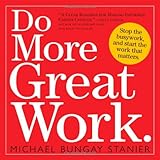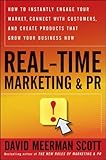Sell Yourself First. The most critical element in every sales effort. Thomas A. Freese.

- Image via Wikipedia
Sell Yourself First. The most critical element in every sales effort. Thomas A. Freese. 2011. 978-1591843658. I am a fan of Freese’s work and his approach – because it works. This book offers a bit if everything to the reader. A good review of Question Based Selling, good strong examples and stories to reinforce, and something new. The new part is how to approach a potential client and/or employer with a very strong opening statements that immediately makes you unique from all others and puts the rest into a commodity situation. In our practice we use variants of this approach all the time and it results in clients telling us we are different from all others and we get the high value work. People do not trust or believe most sales people and Freese nails why it happens and what to do about it. He does it by talking about the elephant in the room and getting right at why people have learned not to trust salesfolks. I also enjoyed his chapter on selling value, not on price. Easy clear read (the guy is good at this). Useful for a coast to coast flight – but take notes and review. Simple yes, easy to do , no since you must change sales behaviors.

Related articles
- What is it About Salespeople? (psychologytoday.com)
- So what can a CEO, Marketer, Salesperson, or CFO do to improve your pricing? Pricing part 11 (regnordman.com)

Category: Communication, Lifeskills, Sales, Sales Efficiency
Training your customers for regular price increases. Pricing part 12

- Image by Getty Images via @daylife
Training your customers for regular price increases. Pricing part 12. If you want to be one of the successful companies who are able to regularly raise prices, through value selling plus other methods you have to start now. Start when they first become a new customer. i.e. start Day1 by reinforcing how to prevent late fees, change of terms costs, change order costs, decision delay charges, partial ordering charges and so on.
Use psychology 101.
- Stepwise small price increases are more palatable than one large one.
- The power of 9 still reigns in setting price (sets a reference price).
- Large cuts are seen as better than a series of small ones (increase the perception of saving).
- Humans love to see that they have avoided a cost versus having one forced on them ( The sense of something gained vs something lost).
- Take an offer away when you say you will. ( Increase sense of loss)
- Communicate your price increases many months ahead – see what the competition does
Use the power of stories
- The need for vendors to remain viable
- A mutual need for survival
- All competitors will be treated equally
Be prepared for those who went to buyers school (e.g. Lowes, WalMart, IKEA, Safeway)
- Run lots of “what ifs” prior to any large bids/contracts
- Never volunteer you give price exceptions
- Resist being bulled – cause they will try to
- Maintain price integrity
- Be ready to walk – they are talking to you because they want something from you.
- Be prepared to let someone else go broke selling to them
Related articles
- Home Insurance – price increases (politics.ie)
- What Happened to Wal-Mart’s Low Prices? (fool.com)
- Five Pricing Tips For Small Companies (blogs.forbes.com)
- Safeway Deflates Its Way to a Profit (fool.com)
- Every Day Low Prices: The Real Story of Wal-mart (socyberty.com)
- When does the customer first ask about price? Pricing part 2. (regnordman.com)
- Osaka Titanium to Increase Prices on Aviation Demand (businessweek.com)
- Bloxx knocks rivals’ price hikes (channelweb.co.uk)
- Pricing survey indicates you are dropping prices, but for the right reasons? Part 1. (regnordman.com)
- What generates the highest profit margin, product or service? Pricing part 3 (regnordman.com)
- Make Customers Pay Extra With a Great Customer Experience (customerthink.com)
- The Competitive Edge: Differentiating Your Product or Service (pamil-visions.net)
- Customer history, is it helpful in raising prices? Pricing part 5. (regnordman.com)
- Examples of Companies That Use Cost Leadership Strategies (thinkup.waldenu.edu)
- Wal-Mart Is Offering Free Online Shipping To Increase Sales (lockergnome.com)
- Top Five Ways to Waste Your Time and Money When Selling Your Business (prweb.com)

Category: Communication, Finance, Leadership, Management, Marketing, Pricing, Sales
So what can a CEO, Marketer, Salesperson, or CFO do to improve your pricing? Pricing part 11
So what can you do to improve your pricing? Pricing part 11. Tips if you are a CEO, Marketer, Salesperson, or CFO
What can a CEO do?
- You are the holder of common sense. Does the pricing policy ( you do have policy? ) make sense to the customers?
- Manage the change process expectations. Of course it will take time and hard work.
- Set up cross functional teams to set your pricing policy
- Keep your marketing dept focused on maintaining constant deep market research
- Move to pricing excellence, not blaming sales and marketing.
What can the CFO do?
- Track the price waterfall for individual transactions, especially Outlaw customers
- Track contract compliance by customer
- Monitor discounts ( discount creep) including unplanned ones. *(eg extended credit, missed deadlines, rebates, one time promos, signing bonus, partial shipments and so on
- Have quarterly analysis on pricing initiatives given to sales/marketing to track real impact on net profits
- Keep long term look aheads on pricing trend and impacts
What can marketing do?
- Be on top of the value drivers (stories) for every stage of customer progress through engagement, buy and close.
- Manage communications to ensure price changes are open, transparent and believeable.
- Test before you deploy
- Create templates, policies, and documentation to support value selling by sales.
What can sales do?
- Actively create and train on tactics and tools to demonstrate and maintain value through the sales process.
- Collect supporting customer stories, competitive data, and validate buyer stories. get this back to marketing.
- calendar tender and contract expiry dates – Pre call proactively and early.
Resources.
- Strategy & Tactics of Pricing – 5th ed. Thomas T. Nagle
- Practical Pricing. Michael Calogrides. 2010
- Sixteenventures.com
- McKinseyQuarterly.com
- http://marketreadiness.blogspot.com
- http://www.strategy-business.com/article/16333

Related articles
- Solicit Sales Feedback Marketers Can Use (customerthink.com)
- How to Manage a One-Person Sales Force (inc.com)
- When does the customer first ask about price? Pricing part 2. (regnordman.com)
- Hiring Your First Salesperson: How to Pass the Torch (entrepreneur.com)
- The Strategy and Tactics of Pricing. A guide to growing more profitably. Thomas T. Nagle, John E. Hogan, Joseph Zale. (regnordman.com)
- Customer history, is it helpful in raising prices? Pricing part 5. (regnordman.com)
- Your Company culture often works to resist raising prices. Pricing part 4 (regnordman.com)
- Are you still using Groupthink to set prices? Pricing panel 8 (regnordman.com)
- Pricing survey indicates you are dropping prices, but for the right reasons? Part 1. (regnordman.com)

Category: Finance, Leadership, Management, Marketing, Pricing, Sales
Write the Perfect Book Proposal. 10 that sold and why. Jeff Herman & Deborah Levine Hermine

Write the Perfect Book Proposal. 10 that sold and why. Jeff Herman & Deborah Levine Hermine. 2001. ISBN 0471353124 . This was suggested to me as the best book on the subject in the market today. I can only agree. Combining an easy informative style, the book presents 10 proposals that were funded with margin comments showing weaknesses and strengths. The authors are also comprehensive in their bibliography. This is an insightful and targeted marketing book directed at book publishers. Useful read in its own right, even if you are not wanting to write a book.
Related articles
- Literary Agents Open the Door to Self-Published Writers (blogs.forbes.com)

Category: Writing
Do More Great Work. Stop the busy work and start the work that matters. Michael Bungay Stanier

- Image via Wikipedia
Do More Great Work. Stop the busy work and start the work that matters.Michael Bungay Stanier. 2010. ISBN 9780761156444. This is the expanded book that follows Find Great Work, I reviewed Get Unstuck and Get Going and this is a worthwhile adjunct to it. The book has utility for the employed and self employed. I think it speaks strongest to those who seek to get going in an organization. For the legions of Gen Y and Millennials out there, here is the what color is your parachute, for your generation. Short and concise the book is a very useful read, full of get-to-the-point-quickly activities. Check out his website, domoregreatwork.com

- Work Smart Video: When to Hold and When to Fold (smarterware.org)
- Work Smart 2: What Projects Are Worth Working On (fastcompany.com)
- Work S mart 2: How Do You Know When to Kill a Project? (fastcompany.com)
- Focus: My new book on simplicity in the age of distractions (zenhabits.net)
- Personal Branding Interview: Paul Sullivan (personalbrandingblog.com)
- Person al Branding Interview: Marcus Buckingham (personalbrandingblog.com)

Category: Technology Industry
Are you still using Groupthink to set prices? Pricing panel 8

- Image by Getty Images via @daylife
Are you still using Groupthink to set prices? I mean, the big meetings where the products group with perhaps marketing sit around a big conference table for a really good naval gazing session. We are still finding companies that set product value and pricing without any independent 3rd party validation. If you are guilty, you have lots of company. Most are really busy with “doing the business”. Getting a realistic view of the market is almost impossible in the hothouse atmosphere of fast moving companies.
Compounding group think is the cart-before-the-horse setting of the product price at the end, not the beginning of the product development cycle. To do this properly, companies would need to acknowledge their bad habits around poor customer requirements setting which leads to vague estimates. Improper/inadequate estimating is most likely responsible for holding 90% of technology companies back from a break through to profits and eventual market success. News flash to dev teams, the sales and marketing folks are positioned to really understand the customers and what they value vs need. Even if your dev team is talking regularly to customers, they still should be joined-at-the-hip to sales and marketing. You must build value, not features.
Related articles
- Groupthink Conflicts and Norms (brighthub.com)
- Groupthink at Zappos? (ikiw.org)
- Groupthink in Society (socyberty.com)
- The inevitable 10:10 remix (hotair.com)
- Has social media caused Groupthink & shift away from pattern recognition/analysis? – Ahead of the Curve (fredzimny.wordpress.com)

Category: Communication, Management, Marketing, Pricing, Sales, Strategy
What Women Want. The global market turns female friendly. Paco Underhill

- Image via Wikipedia
What Women Want. The global market turns female friendly. Paco Underhill. A new good book from the author of Why We Buy. This is further insight into the changing of consumers worldwide by an expert who knows how to write. Every chapter will have you nodding your head with another few insights into the opportunities missed to really direct your marketing to the segments that control the bulk of the money on our world. Who? The over 50 market. This may about what women want, but any guy will find himself in these pages. Very worthwhile marketing book, up to date and immediately applicable. Good 4 hour plane ride book, it will keep your interest and get you thinking.
Related articles
- The incredible shrinking grocery store (theglobeandmail.com)
- David Selinger Joins Paco Underhill at DDI Forum 2010 to Bring Cross-Channel Best Practices to Retail Design Leaders (eon.businesswire.com)
- 5 Ways To Keep Us From Hating Our Shopping Experience [Buyology] (jezebel.com)
- Supermarket science: How they sell you (seattletimes.nwsource.com)
- Can you convert a browser to a customer in 4 minutes? No? How about if I give you twice the time? (auntiekate.wordpress.com)
- RichRelevance Announces “Respect the Shopper: Harmonizing the Cross-Channel Experience” Program with Paco Underhill (eon.businesswire.com)
- Sunday Independent Stupid Statement of the Week (cedarlounge.wordpress.com)
- In These Lean Days, Even Stores Shrink (nytimes.com)
- Global Cleaning Product Industry Leaders to Gather for 2011 ACI Convention (eon.businesswire.com)




Category: Branding, Communication, Lead generation, Marketing
Built to Sell. Turn your business into one you can sell. John Warrillow.
Built to Sell. Turn your business into one you can sell. John Warrillow. 2010. ISBN 9780986480300. Written as a business story, this is written as a clear blueprint for anyone owning a service business to turn his “baby” into a sellable product company. If you already have a product company, there is still a tremendous amount of work involved to make it salable. Well written, with very clear guidance and metrics presented to the reader. You will rip right through this one, but it hits well above its weight class. This is due to the success of the author in selling his own businesses.
Related articles
- Personal Branding Interview: John Warrillow (personalbrandingblog.com)
- What’s Your Number? (inc.com)
- 4 Reasons Big Companies Buy Little Ones (inc.com)
- Sabbatical by the boss leads to attempted takeover (theglobeandmail.com)
- Three ways to find out what your business is worth (theglobeandmail.com)
- Trader Joe’s flirts with being bigger over better (theglobeandmail.com)
- How to Build a Bulletproof Company Culture (inc.com)
- In side a $25 million game of chicken (theglobeandmail.com)
- Test your company’s value by going on vacation (theglobeandmail.com)

Category: Finance, Leadership, Management
Real-Time Marketing & PR. How to instantly engage your market, connect with customers, and create products that grow your business now. David Meerman Scott.

- Image via Wikipedia
 . How to instantly engage your market, connect with customers, and create products that grow your business now. David Meerman Scott. 2011. ISBN 9780470645956. This book is really on top of the real time marketplace, by the author right on top of this as well.. The premise was first, find put how the top 100 US companies are doing in the real time digital /social media space. So he sent out a request shaped around that he was writing a book on how companies are responding to this change in the marketplace. What a hoot – it was incredible the number of companies that he could not contact, or who did not respond. As well the ones who did respond were quite interesting, who, how soon ( minutes to hours to days) and the way they did (Personal, web form, take a survey, take a number and wait and so on). Meerman Scott then build a compelling up to date case on what to do, how to do it, tools to use and where the rubber meets the road on sales results. This gets my vote as the marketing PR book of the year. Its current, well researched and very well written. Every C-Suite dweller needs to read this one.
. How to instantly engage your market, connect with customers, and create products that grow your business now. David Meerman Scott. 2011. ISBN 9780470645956. This book is really on top of the real time marketplace, by the author right on top of this as well.. The premise was first, find put how the top 100 US companies are doing in the real time digital /social media space. So he sent out a request shaped around that he was writing a book on how companies are responding to this change in the marketplace. What a hoot – it was incredible the number of companies that he could not contact, or who did not respond. As well the ones who did respond were quite interesting, who, how soon ( minutes to hours to days) and the way they did (Personal, web form, take a survey, take a number and wait and so on). Meerman Scott then build a compelling up to date case on what to do, how to do it, tools to use and where the rubber meets the road on sales results. This gets my vote as the marketing PR book of the year. Its current, well researched and very well written. Every C-Suite dweller needs to read this one.

- Image via Wikipedia
Related articles
- Fortune 100 Companies That Engage in Real-Time Communications Beat the S&P 500 Index. Media Expert David Meerman Scott Explains Why in New Book (eon.businesswire.com)
- REAL-TIME MARKETING & PR How to Instantly Engage Your Market, Connect with Customers and Create Products that Grow Your Business Now By David Meerman Scott (eon.businesswire.com)
- Real Time is the Right Time (ducttapemarketing.com)
- David Meerman Scott: New Research Shows Real-Time Companies are More Successful than their Fortune 100 Peers (huffingtonpost.com)
- Real-Time Marketing and PR (Hardcover) by David Meerman Scott (offonatangent.blogspot.com)
- Data: Real-Time Companies Are More Successful (hubspot.com)
- Vocus Webinar with David Meerman Scott: Real-Time Marketing and PR (prweb.com)
- Social Media: Moving Beyond the Wire to Real-Time PR (cindykimblog.wordpress.com)
- Once Upon a Time, a Brand Outlaw (personalbrandingblog.com)
- World’s 1st Animotorized Birth Announcement – Shaka Zulu Bulu (writingriffs.com)

Category: Branding, Communication, Lead generation, Management, Marketing, Sales Efficiency
Is price raised at the beginning of your sales process? Pricing panel Part 6.

- Image by Getty Images via @daylife
Is price raised at the beginning of your sales process? Pricing panel Part 6. 70% of the participants in our recent survey did not publish their prices on the web, yet price was raised 70% of the time in the lead generation phase. If this is true for your company, you have an issue with how you are selling value before price. If the pricing question is answered before you sell the value, you are putting yourself in a negotiation hole. Also if the customer is “surprised” by your price, this is another symptom of poor communication of value. One thing to look at is how your marketing department collects customer data. Too heavy a reliance on surveys and questionnaires with too few open ended feedback efforts, will lead to a very shallow view as to how you bring value to your customers. Proper win loss reviews by the sales tam ( with a marketer) are needed to extract where you did or did not communicate customer value.
Related articles
- Pricing survey indicates you are dropping prices, but for the right reasons? Part 1. (regnordman.com)
- Skillcoaching.com Offers Book on Applying and Coaching Selling Skills (prweb.com)
- Lead Generation is a Marathon, Marketing Automation Makes it a Sprint (customerthink.com)
- How, When and Where Buyers Want Content (customerthink.com)
- The sales process that is not based on the buying cycle is an administrative burden. (thecustomercollective.com)
- The Professional Pricing Society Proudly Presents “Pricing for You” the New Pricing for Executives Training Series (prweb.com)
- Does Price Matter Most? (businessinsider.com)
- Startup Sales – Why Hiring Seasoned Reps May Not Work (bothsidesofthetable.com)
- PROS Raises Bar Again with Latest Innovations in B2B Pricing Software (eon.businesswire.com)
- Part 2 in learning about selling, (regnordman.com)
Category: Communication, Marketing, Pricing, Sales






